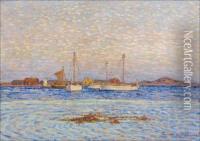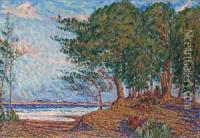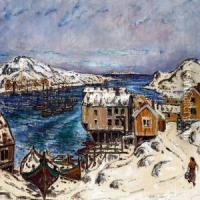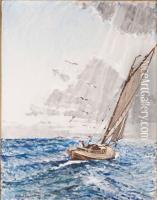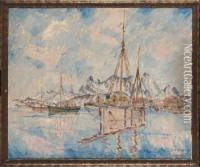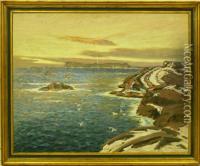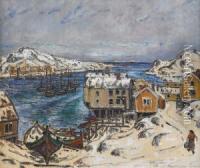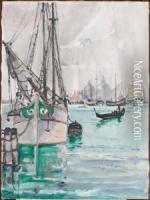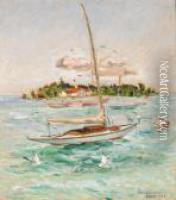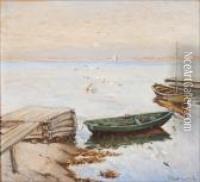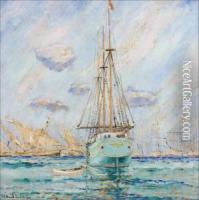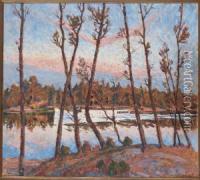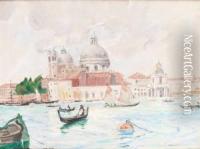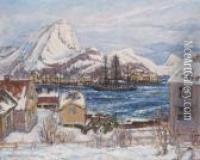Rikard Lindstrom Paintings
Rikard Lindstrom was a Swedish painter, born on September 2, 1882, in Stockholm, Sweden. He is known for his idyllic landscape paintings and vibrant use of color, which reveal the influence of Impressionism and post-Impressionism. Lindstrom's early interest in art led him to study at the Royal Swedish Academy of Fine Arts in Stockholm, where he developed his skills and became immersed in the artistic movements of the time.
During the early 20th century, Lindstrom traveled extensively throughout Europe, which significantly influenced his artistic development. He spent time in France, where he was particularly inspired by the works of the Impressionists, who emphasized light and color in their depictions of everyday scenes. Lindstrom's exposure to French art and culture had a lasting impact on his painting style, and upon returning to Sweden, he began to incorporate the vibrant color palette and loose brushwork characteristic of Impressionism into his own work.
Lindstrom's paintings often depict the Swedish countryside, coastal scenes, and pastoral landscapes. His representation of light and shadow, along with his expressive use of color, brought a sense of vitality to traditional Swedish motifs. He was particularly adept at capturing the changing seasons and the unique qualities of light found in the Nordic environment.
Despite his international influences, Lindstrom's work remained deeply rooted in Swedish traditions, and he became an important figure in the Swedish art community. He exhibited frequently and was well-regarded by his contemporaries. Throughout his career, Lindstrom continued to evolve his style, experimenting with various techniques and compositions.
Rikard Lindstrom passed away on April 27, 1943, in Stockholm. His legacy is preserved in the collections of several Swedish museums, where his paintings continue to be appreciated for their luminosity and expressive color. Lindstrom's contributions to Swedish art are still recognized today, and he is remembered as an artist who bridged the gap between traditional Swedish painting and the broader European artistic movements of his time.
